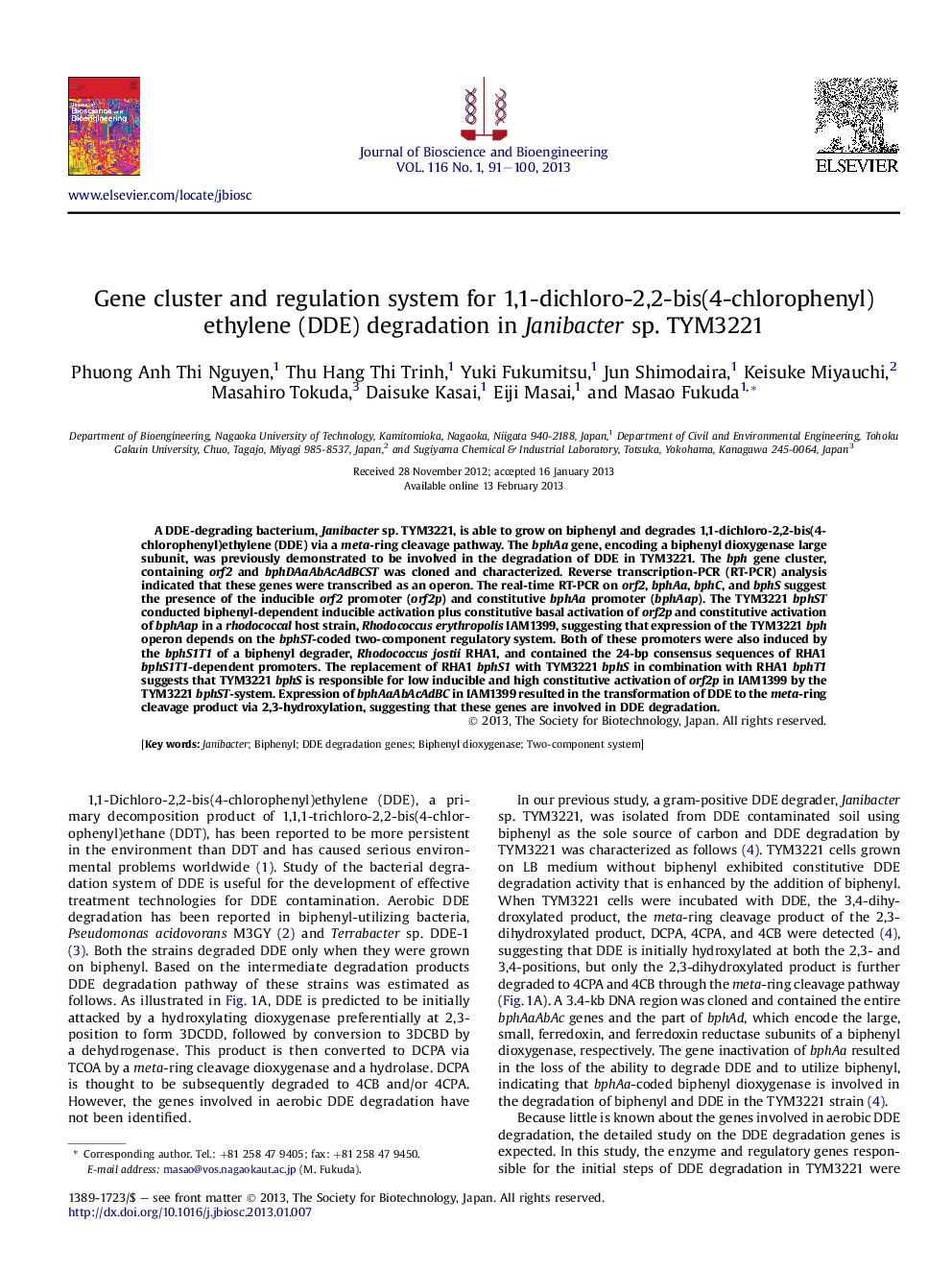| Article ID | Journal | Published Year | Pages | File Type |
|---|---|---|---|---|
| 20856 | Journal of Bioscience and Bioengineering | 2013 | 10 Pages |
A DDE-degrading bacterium, Janibacter sp. TYM3221, is able to grow on biphenyl and degrades 1,1-dichloro-2,2-bis(4-chlorophenyl)ethylene (DDE) via a meta-ring cleavage pathway. The bphAa gene, encoding a biphenyl dioxygenase large subunit, was previously demonstrated to be involved in the degradation of DDE in TYM3221. The bph gene cluster, containing orf2 and bphDAaAbAcAdBCST was cloned and characterized. Reverse transcription-PCR (RT-PCR) analysis indicated that these genes were transcribed as an operon. The real-time RT-PCR on orf2, bphAa, bphC, and bphS suggest the presence of the inducible orf2 promoter (orf2p) and constitutive bphAa promoter (bphAap). The TYM3221 bphST conducted biphenyl-dependent inducible activation plus constitutive basal activation of orf2p and constitutive activation of bphAap in a rhodococcal host strain, Rhodococcus erythropolis IAM1399, suggesting that expression of the TYM3221 bph operon depends on the bphST-coded two-component regulatory system. Both of these promoters were also induced by the bphS1T1 of a biphenyl degrader, Rhodococcus jostii RHA1, and contained the 24-bp consensus sequences of RHA1 bphS1T1-dependent promoters. The replacement of RHA1 bphS1 with TYM3221 bphS in combination with RHA1 bphT1 suggests that TYM3221 bphS is responsible for low inducible and high constitutive activation of orf2p in IAM1399 by the TYM3221 bphST-system. Expression of bphAaAbAcAdBC in IAM1399 resulted in the transformation of DDE to the meta-ring cleavage product via 2,3-hydroxylation, suggesting that these genes are involved in DDE degradation.
